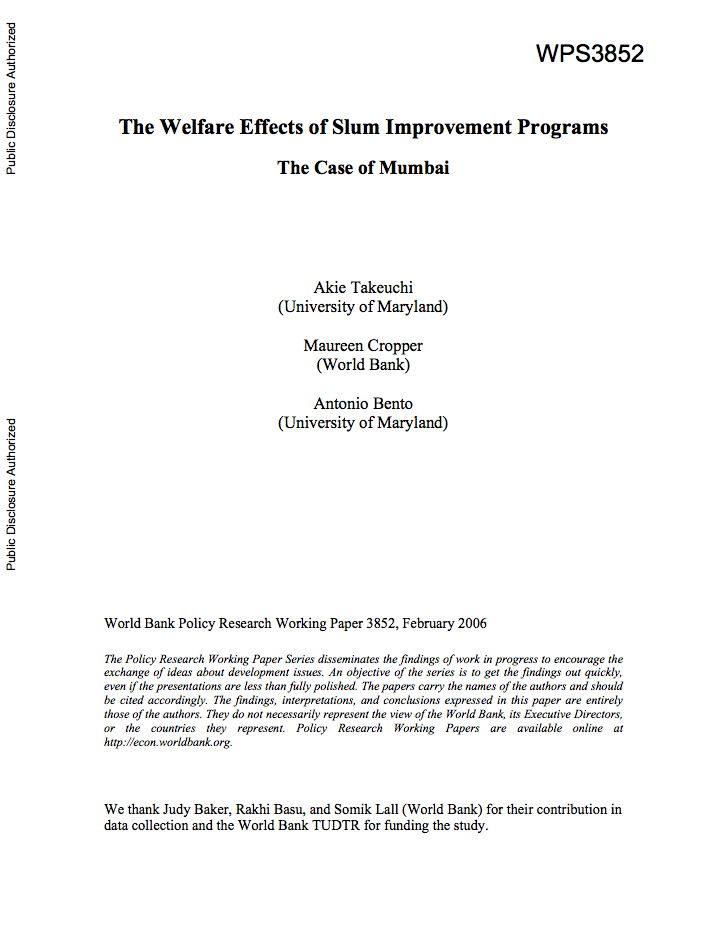The World Bank is a vital source of financial and technical assistance to developing countries around the world. We are not a bank in the ordinary sense but a unique partnership to reduce poverty and support development. The World Bank Group has two ambitious goals: End extreme poverty within a generation and boost shared prosperity.
- To end extreme poverty, the Bank's goal is to decrease the percentage of people living on less than $1.25 a day to no more than 3% by 2030.
- To promote shared prosperity, the goal is to promote income growth of the bottom 40% of the population in each country.
The World Bank Group comprises five institutions managed by their member countries.
The World Bank Group and Land: Working to protect the rights of existing land users and to help secure benefits for smallholder farmers
The World Bank (IBRD and IDA) interacts primarily with governments to increase agricultural productivity, strengthen land tenure policies and improve land governance. More than 90% of the World Bank’s agriculture portfolio focuses on the productivity and access to markets by small holder farmers. Ten percent of our projects focus on the governance of land tenure.
Similarly, investments by the International Finance Corporation (IFC), the World Bank Group’s private sector arm, including those in larger scale enterprises, overwhelmingly support smallholder farmers through improved access to finance, inputs and markets, and as direct suppliers. IFC invests in environmentally and socially sustainable private enterprises in all parts of the value chain (inputs such as irrigation and fertilizers, primary production, processing, transport and storage, traders, and risk management facilities including weather/crop insurance, warehouse financing, etc
For more information, visit the World Bank Group and land and food security (https://www.worldbank.org/en/topic/agriculture/brief/land-and-food-security1
Resources
Displaying 3711 - 3715 of 4907The Welfare Effects of Slum Improvement Programs : The Case of Mumbai
The authors compare the welfare effects of in situ slum upgrading programs with programs that provide slum dwellers with better housing in a new location. Evaluating the welfare effects of slum upgrading and resettlement programs requires estimating models of residential location choice, in which households trade off commuting costs against the cost and attributes of the housing they consume, including neighborhood attributes. The authors accomplish this using data for 5,000 households in Mumbai, a city in which 40 percent of the population live in slums.
Growth Diagnostics for a Resource-Rich Transition Economy : The Case of Mongolia
This paper uses a growth diagnostics
approach à la Hausmann, Rodrik, and Velasco (HRV) to
identify the most 'binding' constraints to private
sector growth in Mongolia - a small, low-income,
mineral-rich, transition economy. The approach of applying
the HRV methodology is useful in those cases where a lack of
data prevents us from estimating shadow prices to identify
the most 'binding' constraint to growth. We find
Where to Sell? Market Facilities and Agricultural Marketing
This paper analyzes the effect of
facilities and infrastructure available at the market place
on a farmer's decision to sell at the market using a
comprehensive survey of farmers, markets and villages
conducted in Tamil Nadu, India in 2005. The econometric
estimation shows that the likelihood of sales at the market
increases significantly with an improvement in market
facilities and a decrease in travel time from the village to
World Bank Assistance to Agriculture in Sub-Saharan Africa : An IEG Review
This study assesses the development
effectiveness of World Bank assistance in addressing
constraints to agricultural development in Africa over the
period of fiscal years 1991-2006. This Independent
Evaluation Group (IEG) review of World Bank assistance to
agriculture in Africa has a twofold purpose. First, it is a
pilot for the proposed IEG study on Bank-wide assistance in
agriculture scheduled for fiscal year 2009. Second, the
Yemen Poverty Assessment : Volume 2. Annexes
From what was historically known as
'Arabia Felix', a land of prosperity and
happiness, Yemen has become the most impoverished among the
Arab countries. The government of the united Yemen, formed
in 1990, has launched so far three five-year economic reform
plans with the goal of restoring Yemen's prosperity.
Have these efforts succeeded? What policies are needed to
further reduce poverty? The poverty assessment report aims







